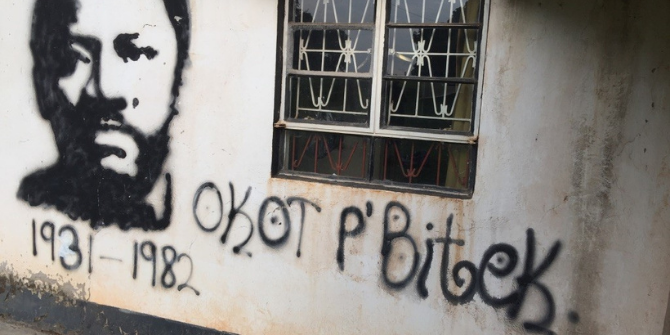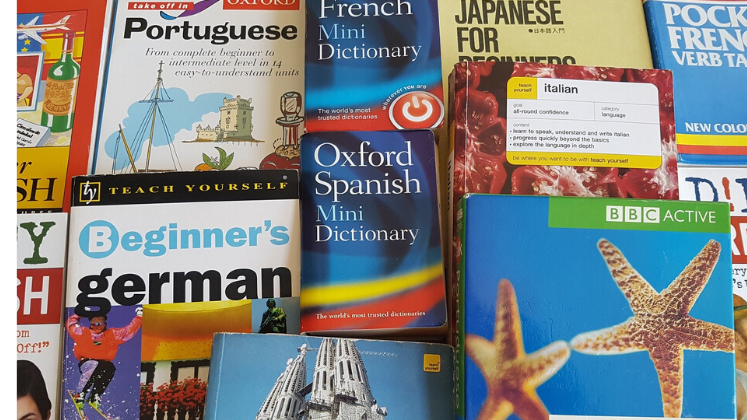 In Behind the Veil of Vice, Middle East expert John R. Bradley sets out to uncover the truth about the place of sex in countries including Egypt, Syria, Morocco and Yemen. Bradley reports on how “temporary” Islamic marriages allow for illicit sex in the theocracies of Iran and Saudi Arabia; “child brides” that are sold off to older Arab men according to ancient tribal traditions; and the hypocrisy that undermines publicized crackdowns on the thriving sex industry in the Persian Gulf. Emma Smith recommends the book for its accessibility, wealth of detailed content, and its potential appeal for scholars working in the fields of sex work and Middle East studies.
In Behind the Veil of Vice, Middle East expert John R. Bradley sets out to uncover the truth about the place of sex in countries including Egypt, Syria, Morocco and Yemen. Bradley reports on how “temporary” Islamic marriages allow for illicit sex in the theocracies of Iran and Saudi Arabia; “child brides” that are sold off to older Arab men according to ancient tribal traditions; and the hypocrisy that undermines publicized crackdowns on the thriving sex industry in the Persian Gulf. Emma Smith recommends the book for its accessibility, wealth of detailed content, and its potential appeal for scholars working in the fields of sex work and Middle East studies.
 Behind the Veil of Vice: The Business and Culture of Sex in the Middle East. John R Bradley. Palgrave Macmillan.
Behind the Veil of Vice: The Business and Culture of Sex in the Middle East. John R Bradley. Palgrave Macmillan.
The West, at times enticed, intrigued, fearful, or revolted by the beliefs and practices of various Middle Eastern cultures, has continuously sought to unravel their apparent mysteries. This is perhaps most evident in light of growing religious and political unrest in the Middle East, marked by a series of terrorist attacks; attacks, which according to some schools, are underpinned, not by a need to maintain identity politics, nor by a response to issues of foreign policy, but, by sexual repression. It has been contended that terrorist attacks are emotionalist panic attacks, driven by sexually repressed young men torn between their commitment to Islam and the need to avoid shame, and the apparent fluidity of Western sexuality, amongst other freedoms.
To dispel this argument, John R. Bradley suggests that we look beyond the cause and effect relationship between sexual deprivation and terrorism, to consider the similarities between the Middle East and the West; notably, both have hypocritical relationships with the notions of public and private sexuality, instigated by rulers who have sought to monitor and discourage sexual urges, in an attempt to assume social control. Bradley intends to illuminate and account for the influence of the social world on sexual behaviour and practices in the Middle East, in more detail than is often provided by academic sources.
Bradley, a British author and journalist who has written on Middle East issues for numerous publications, including The Economist and The Independent, seems ideally placed to bring a fresh and balanced perspective to the subject of sex in the Middle East, having lived, travelled, and worked there extensively. Bradley has evidently encountered ample opportunities to explore the study of prostitution and other forms of extramarital sex in the region, opportunities which may otherwise have been unavailable, biased, or inaccurate if considered solely in a western context. Bradley covers a range of topics based on his experiences of informal discussions with locals including the founder of a Bahraini human rights organisation, providing the text with a sense of credibility and depth.
This is exemplified in Bradley’s chapter on child brides. Here the author identifies the market for child brides in many Middle Eastern (or, more accurately, Islamic, or partly Islamic) countries. Drawing on statistics, amongst other evidential sources, Bradley demonstrates how premature sex and marriage is normalised for many individuals from a young age. Some 49% of girls in South Asia are reported to have been married as children. He reveals the normalcy of temporary, or overnight marriages in some cases, involving young girls and older Arab men, in locations including Indonesia and Egypt, the latter of which, Bradley found himself propositioned in by a local family keen to initiate marriage between Bradley and their daughter.
Bradley suggests that these marriages, perhaps contrary to western belief, are acceptable on the grounds that in many cases, these marriages offer a strategic alliance; for young girls, often from impoverished backgrounds, the main benefit being financial gain, obtained through the payment of a dowry. Far from being considered illegal, many of these arrangements between families are endorsed by Islamic judges and other figureheads, although Bradley’s examples indicate increasing distaste for the practice; western publicity having focused on the legality and human rights issues involved in cases of premature sex and child marriage, including the Gary Glitter case, and the case of a ten year old Yemeni girl who was married to, and later divorced a man in his thirties, in recent times. Whether western media scrutiny has played a part, or there has a more general dissociation from the traditional practice of child marriage in the Middle East, it is unclear, but Bradley makes the general observation that there is more interest in sex tourism involving adult women.
The chapter ‘Pleasure Island’ builds upon these points. Within, Bradley uncovers the presence of a thriving prostitution industry in Manama, Bahrain, which attracts a large proportion of male visitors from neighbouring Saudi Arabia. Bradley presents an intimate historical insight into prostitution in Bahrain, divulging information on the current legal stance on soliciting for sex, the ‘necessity’ of prostitution to the Bahraini tourism industry, and crucially, the political and religious waves of discontent that underpin and shape current (negative) conceptualisations of, and responses to, prostitution in the region. What emerges is an image, fitting with Bradley’s earlier points, that hypocrisy is inherent in ideas of public and private sexuality in many Middle Eastern countries. Such countries may find themselves balanced somewhere between religious fundamentalism and sexual liberalism, struggling to both adhere to their religious commitments, and reap the benefits of economic gain and sexual and material indulgence that stems from a sexually liberated state.
Chapter two on Islamic Feminism reveals a somewhat contradictory view of social conditions, including the place of sex, for women in Middle Eastern countries. Bradley uses this chapter to explore the case of Tunisia, arguably, the most modernised, secularised, and economically stable Islamic country. Drawing on examples of women’s elevated position in various aspects of social, political, and economic life, as well as wider social achievements including the establishment of a minimum age for marriage and legalised abortion, Bradley shows how Tunisia’s liberal stance has benefitted women, particularly in terms of attitudes towards gender and sex roles, and general relations between the sexes. Tunisian women, for instance, are less likely to be sexually harassed in the street, compared to the case in Egypt where 98% of foreign women and 83% of Egyptian women have been subject to sexual harassment. This sense of liberalism has extended to the prostitution industry; prostitution has not been criminalised in Tunisia, nor has there been a conflation of prostitution with human trafficking as with other countries, and there is generally more support for women who choose to work within the prostitution industry, compared to other countries, notably, Egypt, which by contrast, has dealt harshly with the issue of soliciting for sex, opting to reportedly round up and deport prostitutes.
As a whole, Bradley succeeds in his aim to effectively uncover the mysteries surrounding the business and culture of sex in the Middle East. He presents a very nuanced account of the realities of prostitution in various Middle Eastern countries, supplemented statistically and anecdotally. Bradley identifies a range of existent liberal cultural identities and attitudes towards sex in the countries he has visited, accompanied by an underground culture of sex that is often not as shrouded in mystery as western media so commonly depicts. Bradley has demonstrated a rise in the opposition to vice across the Middle East, accounted for by reference to some of the major social and political upheavals to have affected the Middle East since 1979. This would indicate Bradley’s attention to detail, contextualising his account on social, economic, religious and political levels for readers.
However, Bradley offers a rather journalistic and at times biased account which although accurately describes the lived experiences of the author during his time in the region, offers a comparatively limited academic perspective, perhaps strengthened only by the author’s occasional use of statistics and anecdotal evidence to support his observations. Bradley does state his intentions to dispel existing preconceptions and uncover the truth relating to the business and culture of sex in the Middle East, but there is little evidence of a consistent argument throughout the text, and at times the text appears to be more of an attempt to highlight the experiences of the author. Despite this, the text is recommended, particularly for its accessibility, wealth of detailed content, and its potential appeal for scholars working in the fields of sex work and/or Middle East studies.
——————————————————————————————
Emma Smith is a PhD student within the Department of Applied Social Science at the University of Stirling. Her PhD explores victim and statutory/voluntary agency responses to violence against sex workers. Other research interests include: health, policing, equality, sociology and research methods, particularly qualitative based methods. She has a MA Hons in History and Sociology from the University of Glasgow, a PGDip in Social Research from Glasgow Caledonian University, and an MSc in Applied Social Research from the University of Stirling. Read more reviews by Emma.







